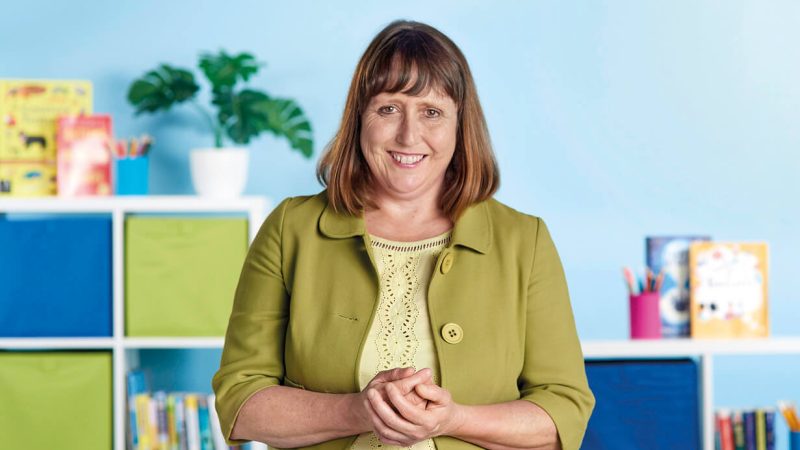“In Escaping Levels, Our Schools Found A Way To Prepare Pupils For Life, As Well As Learning”

Having realised that they had stopped talking about children, a simple, practical and holistic approach to assessment was required
- by Sarah Hardy

I have thought long and hard over the last year about assessment and have come to the conclusion that I, and many others, are thinking too much.
You might question whether that’s possible, given it’s such a key element of our daily practice. But the problem is that our intense focus on the whats and hows of the system has distracted us from what’s really important – how assessment can be used to improve the learning and life chances of the individual children in our classrooms.
We are over-complicating what boils down to a simple dilemma: what does each child know; what does each child need to engage with and be ready to learn; and how can our teaching, planning and care take them forward in making progress?
Notice how I have avoided focusing this debate on curriculum progression. Yes, this is a large part of what we do in our schools, but we also need to recognise that some learners’ exceptional progress and achievement can’t be recorded in a workbook or a data-tracking system. And for some, progress needs to come in other areas before they are ready to learn in the classroom.
Assessment by numbers
The recommendation made by the Assessment Commission to remove levels took away what was, for many, a security blanket. After all, it had been our foundation for so long.
A large portion of staff had been trained to teach using levels, or had even experienced them during their own school days. And we had all got used to levels being used to hold us to account.
That’s why it’s been so hard to change the way we assess children without just recreating what’s gone before – for so long our creativity and passion was made to fit into a box with a number on it.
The only way around this is to go back to your original vision for education. For me, has this meant thinking about why I do the job that I do; which, in the simplest terms, is because I know education creates improved life chances for children, regardless of their background.
If I then fit this with the goals or our wider organisation, it becomes about creating learning environments that enable success by any means, ensuring inclusion for every child. Which brings me to the starting point for life after levels at the TBAP multi-academy trust – a new method of assessments we have called Progress 5.
As its name suggests, our approach involves five simple measures show the impact of what we do with our learners, enabling us to see what additional support they need to succeed and achieve.
We had been slave to a management information system for long enough. In our leadership meetings, we had stopped talking about children and had instead become obsessed with colours and numbers.
But now that we’re back in charge, we focus on having conversations between all stakeholders that allow us to see where children are achieving and whether teaching or alternative support could help them to progress further.
We look at big-picture learning. Having developed our own key performance indicators for each subject strand of the national curriculum, we avoid minute details and instead look at the breadth and depth of children’s learning.
It has been a long journey to get here and we have stripped back so much to keep it simple. At times we’ve been bare and exposed, but keeping sight of our original vision has helped us pull together as a team and resist the temptation to over complicate our process.
Freedom in simplicity
Holistic assessment is crucial. In other words, are children ready to learn? And if not, what do we need to do as a school to respond to this?
Our starting point is Maslow’s hierarchy of need. We must first tackle whether children are too tired and hungry to take part in lessons, before moving on to checking they feel confident and able to take risks.
If they are not ready to learn, what interventions can we plan beyond literacy and numeracy? Are there children who need to be included in breakfast club, receive therapeutic input or who would benefit from family support work?
Without levels, it’s easier to respond to the needs of our children, our school, our curriculum and community. No child is left behind if SEND learners are always making recognisable progress, and the ceiling of levels is blown away for under-challenged pupils.
If you keep it simple, you will find freedom, staff who want to talk about children and learning, and, perhaps most importantly, the time to do what we all know truly enables progression: teach inspiring lessons.
WHAT IS PROGRESS 5?
At TBAP academy, assessment focuses on wellbeing, as well as attainment.
1. Curriculum progression Using very simple Key Performance Indicators, we note if a learner can or can’t do something required of them to access learning in that subject. For example, can a learner infer information from a text in English, or can they identify simple number patterns in maths? Feedback to learners is always focused on what they need to do next to move forward, or to deepen their learning. This enables us to identify patterns in cohorts of learners and methods of teaching.
2. Attendance and punctuality We report this as a percentage of progression from previous terms, on an individual and school basis. This is the ultimate indicator of readiness to learn – being physically present in the school.
3. Literacy and numeracy We look for progress in every subject, not just English and maths, checking against identified expectations of what it is to be literacy and numerate. Teachers note when a learner has achieved something, enabling us to see patterns – not just in our children’s attainment, but in teachers’ performance, also. Do we, for example, need to improve training for phonics delivery alongside providing additional learning opportunities for speaking and listening?
4. Enrichment and therapeutic interventions Universal enrichment is seen as the starting point for more focused therapy input. All our learners access an array of opportunities to deepen their skills as members of the community, and we aim to track these across the year to ensure personal and social skills are developed. This could be through fishing, camping, sports, theatre trips or being school ambassadors, etc. Our therapeutic input pyramid starts with all children and then offers focused support where required. Therapists formally reporting to the school’s SLT using the Short Edinburgh Warwick Profile.
5. Behaviour for learning This is about learners being ready to learn, and celebrating and encouraging this. It’s crucial that we recognise and reward progress. It’s about language we use and the commitment we have to starting and great and just getting better.
Sarah Hardy is executive head of the TBAP Teaching School Alliance.










